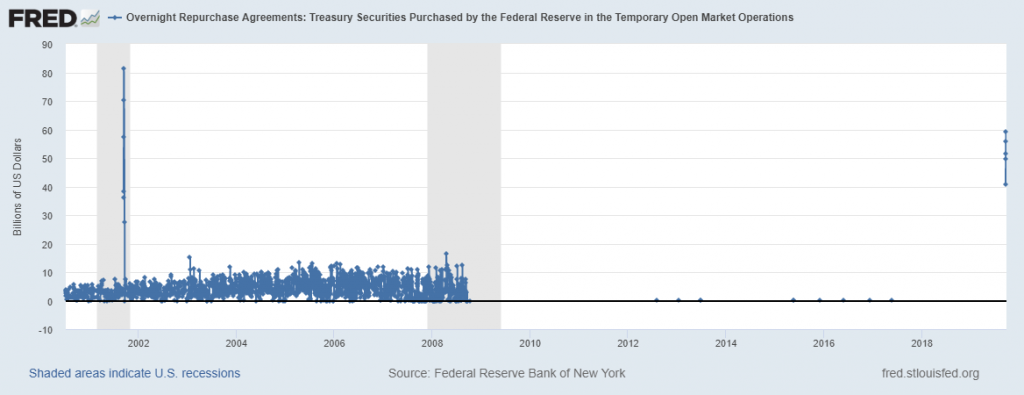Two years ago, the St. Louis Fed introduced FREDcast, a forecasting game in the style of fantasy sports. In FREDcast, users enter a forecast for four economic time series each month: GDP, payroll employment, the unemployment rate, and CPI. Now in its third year, FREDcast is growing in popularity and taking hold at some major universities.
The motivation behind FREDcast has been to lower the barriers of forecasting macroeconomic time series, and the game is designed so that anyone with a basic understanding of data can join the game and start forecasting. One of the major challenges, though, is establishing that common, basic understanding of time series data. So let’s lay out a few concepts and definitions to get you started.
What is a time series?
In plain English, a time series is a sequence of data observations collected over time. For example, a collection of the daily closing values of the Dow Jones Industrial Average is a time series. Time series data differ from cross-sectional data, which are observed over many subjects either at the same time or where time is not a factor. Test scores from a statistics class mid-term would be an example of a cross-sectional dataset.
The FRED graph above plots the level values of a time series: real gross domestic product (GDP). Real GDP is the value of an economy’s production of goods and services—a prominent economic variable. In FREDcast, users forecast the growth rate of real GDP, but for illustration purposes we’ll look at the levels here. On the horizontal axis are the quarters of the year when GDP is measured, and on the vertical axis are the values of GDP collected in those quarters. The units of the series are listed on the vertical axis, so we can see that GDP here is measured in billions of 2012 dollars.
The data show some patterns. The most striking pattern is that the value of GDP increases. A secondary pattern involves the smaller movements in GDP up and down. These patterns represent two of the four core properties of time series data:
1. The trend. In any time series, the trend is the slow change in the series over a long period. In this case, it’s a slow increase over time. In the natural world, this is analogous to, say, climate change: how temperatures have been rising slowly over time.
2. The cycle. In most economic forecasting and in FREDcast, we’re interested in the growth rate of a variable. Growth rates can be calculated in a variety of ways, but the core idea is to look at the change in the value of the series from one period to another. As these periods are typically close together (e.g., month to month or year to year), the growth rate captures the smaller, short-term movements in the series instead of the long-term trend movements. These short-term movements are called the cycle, which represents predictable increases and decreases in the data that occur in sync with another process (e.g., the business cycle). In the graph above, the smaller movements in the data occur in sync with the recessions (gray shading). To continue with our weather analogy, cycles could be thought of as heating and cooling in the atmosphere that result in distinct periods of both fair weather and storms.
3. Seasonality. There are cyclical patterns that repeat over units of time (e.g., daily, weekly, monthly). Think about the weather in general in your hometown for an entire year: The temperature displays the same basic seasonal pattern, right? GDP does have a seasonal pattern, but the agency that collects GDP )the Bureau of Economic Analysis) removes the seasonal pattern before publishing the data. For most economic data, we care about the trend and the cycle but not the seasonal variation, since that represents patterns in the data that are independent of overall economic health.
4. Random variation. The last property of time series data is random variation. Not every part of a time series can be explained by a trend, cycle, or seasonal pattern. What’s left over are just random movements that can’t be predicted. Consider, say, a chilly day in mid-July or a warm sunny day in the dead of winter.
What are the time series in FREDcast?
With the exception of the unemployment rate, all the variables used in FREDcast are either changes or growth rates. The variables have also been seasonally adjusted to remove seasonal variation. The leftover components in the FREDcast variables, then, are the cycle and the random variation. Because we can’t predict random variation, FREDcast forecasts are really focused on forecasting the cycle of the four variables.
A simple method to start forecasting is to plot the growth rate of the FREDcast variable* and look at how the cycle relates to the business cycle. Forecasters should then consider the context of the overall economy when making forecasts and draw on their economic knowledge to make a prediction.
Time series data may seem like an unapproachable subject to a new student of economics, but we hope short, simple lessons like these can help anyone become more comfortable with the data.
How this graph was created. Search for “real GDP” on FRED, select the first result, and click “Add to Graph.”
*FREDcast players forecast CPI inflation, for example. Now, CPI is the consumer price index, which, as the name indicates, is an index. But a more common way to talk about inflation is as a growth rate. From the CPI series page in FRED, go to the “Edit Graph” panel and then to the “Units” menu: Change the units from “Index 1982-1984=100” to “Percent Change from Year Ago” and you have a growth rate.
Suggested by Diego Mendez-Carbajo and Hannah Shell.

